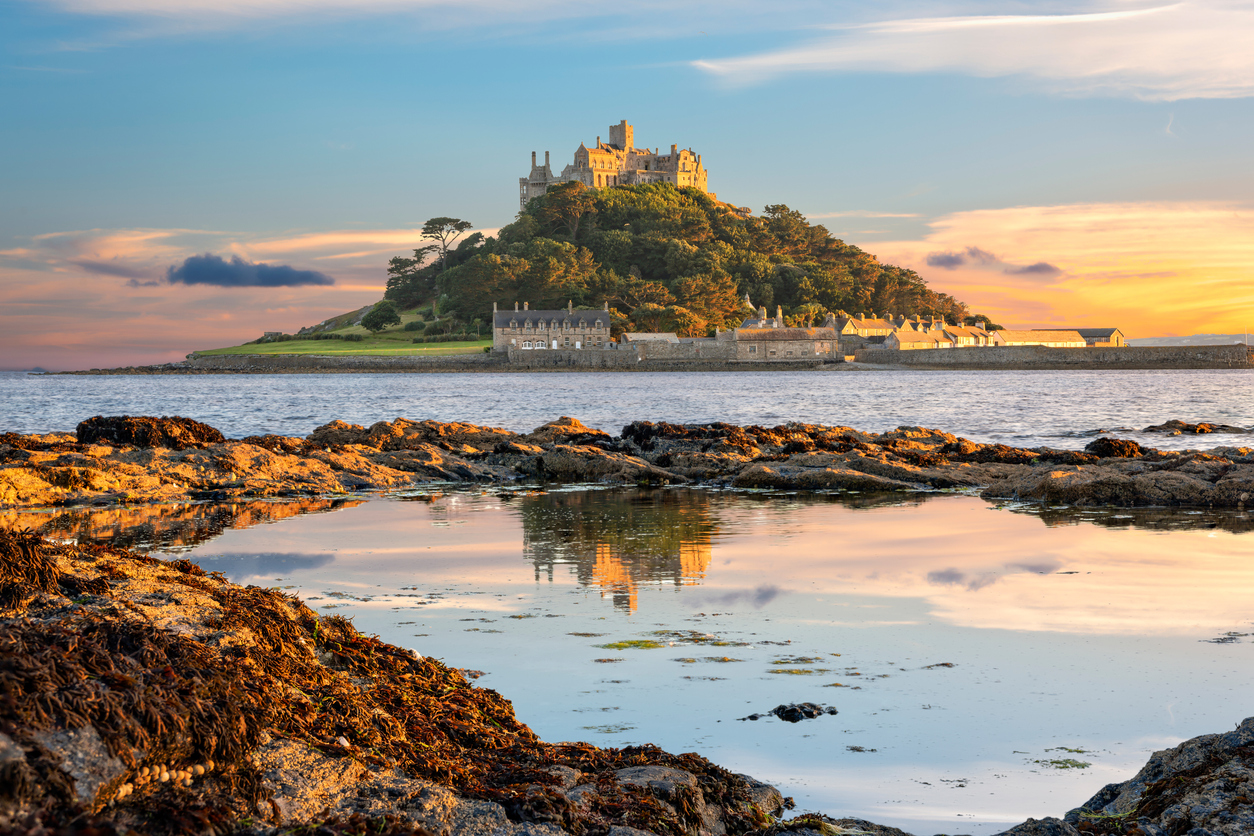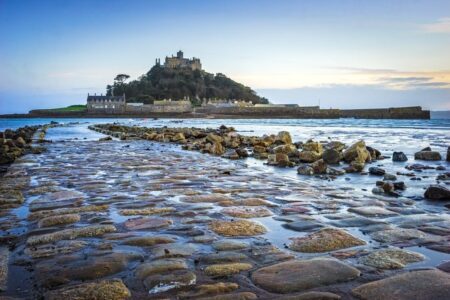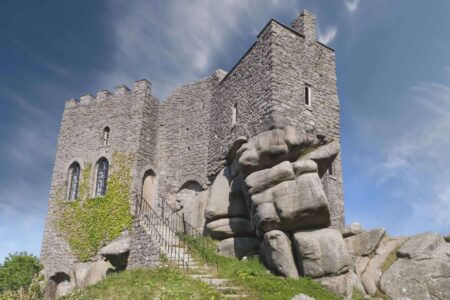This rocky island topped by a mediaeval church and castle is still home to a living community. Whether you approach by boat, or walk the causeway once traversed by rampaging giants, a visit to St Michael’s Mount is a must for any visitor to Cornwall and for good reason.
A giant myth
Legend has it the mount got its name when the Archangel Michael appeared to local fishermen in the eighth century. Other stories speak of a lost land under the sea. Then there are the warring giants who lived on the mount who would wade to the mainland stealing cattle and terrorising local farmers. The legend of Jack the Giant Killer also has roots here, with a heavily shuttered well now standing on the spot where the lad from Marazion trapped the giant.
Real history
Even without the myths and legends, the actual history of St Michael’s Mount is fascinating enough – and unlike much of our national heritage, it’s one that is very much still alive. An important port during the iron age, it went on to play a role in the Wars of the Roses, the Cornish Rebellion, right through to the English Civil War. In the Restoration period that followed, the Parliamentarian Colonel John St Aubyn bought the Mount.
St Aubyn family seat
It has remained the home of the St Aubyn family since 1660, during which time its history has become far less dramatic. In the Victorian era, another John St Aubyn added a Victorian wing to the medieval castle, turning it into a mansion house. Part of the appeal of the Mount is its piecemeal construction; you’ll find echoes of the past as you move through its corridors and ancient doorways that reflect its development from priory to fortified castle.
I spy
Among the fascinating reminders of the past, look out for an ostrich chewing a horseshoe in a frieze of a hunting scene. In the smoking room, there’s a scrap of the coat worn by Napoleon at the Battle of Waterloo. The Blue Drawing Room houses the sofa where Queen Victoria and Prince Albert once visited and drank tea. And in the 14th century church, there’s a bronze statue of St Michael offering mercy to the devil at his feet.
A working community
St Michael’s Mount is also home to a population of around 30 people who are mainly employed on the island. This number is well down from its peak in the early 1800s, when the Mount was thriving and the village thronged with more than 300 islanders living in 53 houses on four streets. At this time there were pubs, a school for the island’s children and a green where villagers would gather to play bowls.
Garden
The beautiful terraced garden, designed in 1878, is a great place to take in the panoramic views of the bay. Walk along the steep terraces and you’ll see all manner of unusual plants, from exotic succulents to delicate Tulbaghia, which survive and thrive thanks to the island’s mild microclimate. Although salt winds blast the mount daily, frosts are rare as the rock absorbs the heat during the day and releases it at night.
Practicalities
St Michael’s Mount is open between October 1 and March 31, although the village is only accessible during the summer. A ferry runs at high tide, with the causeway accessible at low tide. Due to its age, the steep and sometimes uneven paths around the island can be a difficult climb, particularly for people with limited mobility.


